The Mukran Wreck– sunk off the Isle of Rügen, Germany in 1565. Preliminary report
Fig 1. Map of the Isle of Rügen. Wreck site is marked with a red cross. IntroductionDuring a training exercise in 1985, navy divers found a bronze gun near the village of Mukran on the Isle of Rügen (Fig.1). According to the initials on the barrel, revealed after cleaning by sand blasting, the cannon was made for the Danish king Christian III in 1551. It is thought to be one of the few bronze breech-loading guns of its kind in the Baltic region. When the gun came into the possession of the Rostock Maritime Museum in 1987, a survey of places where wooden remains had been found was organised. Unfortunately, the location of the cannon site was not recorded exactly, and the advice to make a comprehensive survey of the area was not followed. In 1987, the author was asked by the former director of the museum to research the historical background to the loss of the cannon, on the assumption that a ship had sunk in the area. The political changes in East Germany impeded progress in this research. In 1990, a search by the ship R/V DENEB from the Bundesamt für Seeschiffahrt und Hydrographie, was unsuccessful. In January 1994, after discussions with the Landesamt für Bodendenkmalpflege Mecklenburg-Vorpommern, another attempt was made with the co-operation of the University of Rostock, Institut für Meerestechnik und Schiffbau. With specially designed underwater equipment a comprehensive search of the sea off Mukran was made. The expedition was led by the author. On 13 January 1994, an hour before the expedition was due to end and after a four-day search of an area, about one square nautical mile, the hull of a wreck was located at a depth of 2.5 m. For the general survey and measuring of the wreck, the work followed Carl Olof Cederlund's methods for the scientific documenting of carvel-built ships in the Baltic (Cederlund, 1983). In 1992, Swedish colleagues advised the author of the loss of the Swedish ship Finska Falken. She seems to have sunk off the coast of Warnemünde on 11 July 1564. The attempted correlation of information, especially about the marine finds of carvel-built ships of the 16th century in the Baltic Sea, soon showed that knowledge in this field is imperfect. To date, only six wrecks found in the Baltic dating back to this period have been examined and some of those were clinker built. A number of methodological approaches were possible and, although the emphasis of the archaeological analysis was on carvel-built ships, clinker-built ships were also studied in order to make a comparison with the data from the Mukran Wreck investigation. At present, discussions on the transition between these two techniques are widespread in international research. The present status of research regarding the shipwreck site near Mukran is described below. Methods for searching and locating the wreckPrevious expeditions had proved unsuccessful, mainly because they were nothing more than sporadic diver searches in inaccurately measured areas. A special method was developed from previous experience of locating other wrecks based on the use of technology developed especially for underwater searches. After deciding on a realistic work plan for four days, searching a limited area, the expedition members were instructed that the main goal was to search that area sufficiently to be able to say that there were no remains to be found there. The support ship, normally used for laying buoys and patrolling the inshore waters off Stralsund, had a relatively shallow draught of 2.2 m. Electro acoustics and video techniques were used together in the search. The first system was a towed sledge with an installed sector scanning sonar. It was developed by the Institut für Schiffbau und Meerestechnik of the University of Rostock especially for searching for objects underwater. This system is similar to a side scan sonar. The second system was a Searching Eye controlled from an inflatable dinghy. It consists of an SVHS video camera (Sony/Osprey) mounted in a plastic ball connected by means of a cable to a recorder and control system on board the inflatable. The equipment, fitted with a sounding lead and weighted fin, was pulled through the water at a constant height above the seabed at a speed of about 2 knots. It works most effectively at a height of 3 m above the seabed but of course the quality of the pictures depended upon visibility under water. Fig 2. The Searching Eye camera with DGPS navigation. The actual working depth was much shallower than on this image. The sector scanning equipment, with a compact colour imaging sonar system (Simrad MS 900), was very kindly lent to us by Scholz engineers (in Fockbeck near Kiel). As an alternative to visual recordings, the equipment using acoustic signals was thought to be more effective due to the chalk particles in the water, making visibility difficult in this area. This equipment is of particular interest when searching for wrecks, as it has a range of 5 - 250 m with the sonar head at a maximum angle of 45° to the seabed. Thereby, at up to 100 m even badly damaged remains show up as red or purple shapes on the monitor. In the preparatory research, coupled with a DGPS to define the position of the objects on the screen, it proved no problem. The sector scanning alone, with the towed sledge along the seabed, gave little indication as to the nature of the objects shown on the screen. Thousands of reflections turned out to be large stones, with which the prospective area seemed to be covered. Therefore, progress could only be made with the Searching Eye. For orientation purposes special buoys fitted with radar reflectors, of the kind used for marking fishing nets, were positioned using DGPS. It limited the search area per turn to one cable (185 m) by one cable, whereby the centre was monitored in addition. A radar system linked to the navigation system of the support ship, controlled the determination of the search area, and the positioning of the special buoys on the support ship monitor. The inflatable dinghy then meanderingly covered the area, changing course about 20 times. As the camera had a visibility range of about 3 m, this meant that the seabed could be checked in its entirety. Using this procedure five areas were covered, in effect a total area of about one square km. A weighted buoy-line 80 m east of the prospected area is evidence of the failure to pinpoint the wreck during previous years. On the last day the wreck was discovered in the fifth search area. Topographical situtationThe wreck belongs to the category of stranded wrecks [1] . The intact part of the hull is situated about 180m from the shore in an area considerably influenced by wave movement. Through currents, wave movement and icing many artefacts have probably settled in the first part of the sediment. The shipwreck lay with its broadside to the shore confirming that the ship had stranded. The forward, northerly part of the ship was covered with more stones than the southern part. These stones are partly covered by mussels. According to a biologist this refutes the opinion that a sandbank covered the wreck prior to 1993. The southern part of the wreck is surrounded by coarse gravel, mixed with clay in places. A chalk reef ends about 30 m on the shore side of the wreck and causes bad visibility during unfavourable weather produces strong undercurrents. The undercurrents are probably a result of the close proximity to the harbour wall of the ferry terminal at Mukran. Some of the stones covering the wreck have a diameter of up to 1 m and whether these can be considered ballast remains to be seen during a more exact examination of the wreck-site. Fortunately, the hull is exposed, especially the stern which points towards the harbour wall and is partly underwashed. The ship does not noticeably list. Archaeological context [2]The ship's bottom is the only part that is homogenous (Fig.4). Due to its close proximity to the shore, the parts above the frame floor have been destroyed. The wreck, with a length of about 20m, is lying on a flat keel with the bow facing north and consists of about 13 starboard floor timbers and 17 on the port with a ceiling probably fixed only by treenails. This ceiling is only partly apparent on the starboard side and consists of a minimum of five approximately 25-40 cm wide and 3 cm thick planks assumed to be oak. The rest that can be seen on the drawing is the outer planking. In the north after a storm was discovered the bow section. In this context many cannon balls lay between the bow and the first floor timber.
The first strake of ceiling planking is not directly against the keel: the clearance is about 30 cm. This gap is called a bilge or air course which otherwise is repeated at the water line to create an air passage between the outer and the inner planking. The gap allows for the pumping out of bilge by pumps (Keith, 1989: 91). The length of the keel cannot be determined at present. Some traces of rust indicate the use of iron nails. The keelson consists of two parts and its length has been established as 10 m. Between bow and madcap it loses contact with the ceiling. A mast-step with a length of 50 cm was worked into it and 2 m further astern is a 20 cm-long groove. The wood is mostly oak, which turns black when there is a lack of oxygen. Parts of the keelson seem to be made of another kind of wood.
The floors in the bow section have lost contact to the keelson as they had no support from the stems (Fig.5). Part of a bilge-stringer on the port completes the shipbuilding details of the wooden remains of the bottom. A piece of wood which has settled in the first horizon on the starboard side and which is partly hidden by the planking could possibly be a knee for a deck (Fig.7). On the starboard abeam the rabbet at the end of the floor frames are bronze metal accumulations, among others an artefact assumed to be the trunnion of a small cannon. Further astern, there was probably a melted down silver or pewter bowl, which in the summer of 1994 no longer could be found (Fig.8). In the bow area there are many cannon balls especially 6 and 1 pounders. About 6 m in almost direct continuation of the keel in the direction of the bow is a cannon covered in a thick coat of ferrous oxide, probably an iron breech-loading gun about 120 cm in length. Whilst removing a buoy abeam the bow on the starboard side, part of an anchor was found which probably belongs to the wreck.
Evidence of ship constructionCompared with the Elefanten [3] , built as a war ship in Stockholm between 1555-1559, the Mukran wreck had a much more beamy shape. The rising of the floor frames indicates little difference between bow and stern (Fig.6). The carvel-ship Elefanten was more streamlined, and its sides were given extra protection by wales worked in at obtuse angles, which repeat themselves every two plank breadths. They are reminiscent of the Spanish construction style of the Catalan não (Ekmann, 1945-46: 213). This leads to the assumption that the Mukran wreck was a trading ship that had been converted to a warship. Despite the degree of destruction a convex deadrise is apparent, as it is where the planking rises along the stem and the futtocks would have been fixed. Based on Hanseatic specifications the futtocks can be assumed to be the same length as the floor timbers, minus the extra length taken up by the curvature (Winter, 1970: 34). This suggests that the maximum beam of the ship was about 8 m.
At present no futtocks have been found; these would provide more information about the beam. The Mary Rose is for example 11.4 m in beam and the Maasilinn wreck is 5.5 m. This is consistent with the dimensions of the Mukran wreck. As Niels M. Probst wrote, in Nordic, especially Danish, shipbuilding traditions, a flat bottom using the natural growth of the wood is characteristic. The best example of this is the hull of the Gideon near Helsingör, Denmark (Probst, 1991: 143-152). It can be assumed from the shapes of the floor timbers that one third of the stern is missing. By its form, as in the case of the Kraveln (working name) (Adams et al., 1995: 20-21) it could well be a carrack. Using carrack-building dimensions and length and beam ratios of 2.5:1, it gives a length of about 30 m (Friel, 1994). A round-stern base with a square stern over a transom beam should probably be assumed. A good comparison can be made with the remaining counter as a square-stern construction on the Kraveln (Adams & Rönnby, 1995: 20-21). The rabbet further astern, mentioned above, could have been for the foot of a windlass. A capstan with foot was also found aboard the Kraveln. It was in a good condition and even showed signs of use. The foot of the mast has no abutment at right angles to the ceiling and the keel is not wider at the point of the socket. The length of the mast-step is a result of the necessity of improving the ship's stability after the mast had been erected, by moving the mast forward or back depending on the degree of yawing. A specially shaped wedge placed in the socket secured the foot of the mast in place. By pinpointing the former position of the socket it was possible to determine the position of the base of the mast when it broke out of its footing. A wedge was found in position during survey of the Highborn Cay Wreck (Oertling, 1989: 10). A 30 mm bronze cube with a 25 mm hole which had been subjected to heat treatment was also found. This artefact has been identified as the bearing for a shaft. The type was first found in the Yassi Ada Ottoman wreck and later on the San Esteban, the Villerfranche Wreck, the Mary Rose, and on the Molasses Reef wreck. In the report on the latter three bearings of differing diameters were examined. Donald H. Keith assumes that these were in the inside of a block and led the shaft of a block. These blocks were used especially in the higher parts of the rigging, (Keith, 1989: 91-92). ArmamentTwo cannon and a broken piece of a chamber of a cannon (bronze) figured prominently in the preliminary survey of the wreck-site; firstly, the aforementioned breech-loading bronze cannon, and, secondly, an iron breech-loading gun with a ferrous oxide coating. The bronze cannonAssuming that it is a breech-loading cannon, the weapon consists of a powder chamber 40 cm in length and a 68 cm long tube section at the front of the cannon (Fig.13). The aforementioned chamber piece destroyed by an explosion, a fragment with a vent hole which would seem to be the upper side of the powder chamber, completes the list of findings and leads to the belief that the ship (or ships) had several bronze cannon on board. The broken chamber piece is circa 35 cm in length.
A transport function for ship can be ruled out because the broken tube of the cannon was loaded and was ready to fire. It is only partly preserved and it would seem that the front of the tube is missing, on the assumption that the powder chamber belongs to the tube. The mouth of the tube resembles a muzzle, so identification is difficult. The powder chamber tapers off at the connection to the tube mouth and protrudes as a connection for 3 cm. As the diameter of the tube is 5 cm it can be classified as a one pounder (Gohlke,1850; Olmes, 1977: 99). The cast decoration of the coat of arms of the Danish royal family with the 3 lions and 9 hearts indicates the cannon belonged to the royal Danish arsenal in Copenhagen. Below this is the inscription CHRISTIAN VON GOTES GENAD KONICH CH THO DENEMARCKEN NORDWEGEN UND DER GOTEN ANNO DOMINI 1551 proving without doubt that its origins are Danish. The acanthus leaves that decorate the mouth of the chamber are in the style of the Renaissance and are often found on bronze weapons of this period. (Müller, 1968: 116). Those from the foundry of the family Hilger in Freiburg were often used. An important characteristic is the octagonal form of the front part. It is very noticeable that the tube is distorted and that the trunnions as well as the handles on the mouth of the powder chamber are missing. There are virtually no comparable bronze breech-loading guns anywhere in the world, mostly just barely identifiable fragments. This can be concluded after research in the Tøjhusmuseet in Copenhagen, the Deutsches Historisches Museum in Berlin, in the Marinmuseet in Karlskrona, the Armémuseet in Stockholm, the Forsvarsmuseet in Oslo and extensive correspondence with Robert D. Smith, chief conservator in the London Tower Royal Armouries and an expert in the field of cannon of that period, as well as with Alex Hildrid, head of the cannon collection at the May Rose Trust in Portsmouth. Toni L. Carrell, Donald H. Keith (Ships of Discovery, Corpus Christi Museum, Texas) and Joe J. Simmons III, all of whom have made comprehensive studies of ships of the 16th century, were not able to identify the origin of the cannon. Therefore, it can assumed that, if the two parts did indeed fit together to form one cannon, it would be unique evidence for a short period in the 16th century when bronze breech-loading cannon were used as ships’ armament. By itself the bronze powder chamber is remarkable. Research into the development of the rare bronze armaments of that time, as far as the author is aware, is only possible at the Tøjhusmuseet in Copenhagen, which has the front part of a bombarde and a three-pound bronze back loader from the year 1745 (no. 86) and at the Historisches Museum in Berne which has a chamber of a bombarde. M. Mortensen, from the Tøjhusmuseet in Copenhagen, strictly separates the powder chamber from the front part and classifies the octagonal tube as a so-called muzzle loader. For him the mouth of the tube is without doubt the muzzle and he accepts the anomaly that the coat of arms and the inscription would therefore be upside down. The latter would then be readable from the front of the muzzle. Even though no bronze items from this period survive today in Denmark, the historical research into this field and particularly into the royal foundry in Copenhagen would substantiate this belief. These muzzle loaders, in their characteristically Danish octagonal form, and a calibre of up to 6 pounds, were often used for arming ships until the middle of the 16th century [4] . After further research, Reidar Olsen, of the Forvarsmuseet in Oslo, agreed with Mortensen that the piece was probably made by the Danish royal gunsmith Lauritz Madsen (appointed 1540), the foundry smith at that time. Certain similarities can be seen when comparing the elements of style with surviving drawings made by Madsen [5] . This exemplifies the rapid development of weaponry in the 16th Century. In an article due to appear at the end of 1998, Gerhard Quass reports the sales of weapons from the arsenal of Ulrich von Mecklenburg to Denmark in 1571 whereby these were probably only muzzle loaders. Therefore we cannot exclude that the cannon was possibly imported into Denmark. A good comparison is found in the descriptions of cannon nos 79-81 by Otto Blom. It is not difficult to find parallels to the finds described, the 3/4 pounder with the no 81 was also made by Madsen in 1551 as a breech-loading cannon (Blom, 1946: 38). Robert Smith, Gerhard Quass, Reidar Olsen and Arne Blix (Armémuseum Stockholm), all agree that despite any uncertainties the two parts belong together and are part of a breech-loading cannon. Quass, in consultation with Heinrich Müller, explained the meaning of the powder chamber being wedged into the presumed breech of the tube. This after comprehensive checks fitted into the profile without any great discrepancies and, therefore, would be able to bear the pressure at this weak part of the tube. The A on the breech of the tube at the same level as the coat of arms, and the B on the connection at the height of the vent hole, indicate that both parts belong together. The octagonal form of the large lifting handle of the powder chamber supported the author's belief that it must have been a back loader. The lifting handle is situated to the left of the vent hole so it was probably trained by the left hand and ignited by the right hand. These smaller cannon, especially swivel-mounted guns, were operated by an arquebusier and a servant. On a medium-sized warship there were between 50 and 60 arquebusiers (Kloth, 1921: 128). In the case of the Mukran wreck it is therefore estimated that there would have been approximately 40. Robert Smith notes that the two sections would have been supported on a wooden bed with either wheels or a swivel type mounting. The were secured to the bed with straps and the powder chamber was placed behind it and held in position with a traverse wedge. Wedge scars can be seen at the butt end of the powder chamber. This type of cannon was used for firing at the rigging or crew of an enemy ship. This swivel type has been discovered on other wrecks found in Anholt [6] , during work on the Cattewater wreck and in 1994 during work on the Kraveln at a depth of 30-36 m. The extent of the arming of ships can be seen in the Lübecker Protokoll Buch (Lübecker Archiv) which lists the arms aboard four ships dating from 1526 (Brehmer, 1888: 166). The 1565 sea battle and possible wreck identityThis description of the battle of the 21 May 1565 is provisional as the relevant sources are still being compiled. In general, the reports that were made about the fleet movements in May 1565, and the position of ships do not diverge greatly at least as far as ship’s names and the names of those responsible are concerned. Special value must be attached to those sources whose authors display a certain amount of knowledge of the subject and who are able to give their reports a definite context. It was decided to give the ships their original names and to translate them afterwards as reversing this process had caused problems in the past. The Swedish admiral, Claes Christerson Horn (in German sources also known as Claus Christernissen) approached Bornholm on the 20 May 1565 with a fleet of approximately 50 ships (Tegel, 1751: 163) [7]. This newly formed fleet came from Dalarö. On the south coast of the island were 9 ships [8] of the allied Danish and Lübecker fleet under the command of Peder Hvitfeld (in German sources known as Peter Witfeldt). Identification of these ships appears to have proved difficult as their names vary between successive reports. Having been warned by the captain of Bornholm, Sweder Kettink, the 9 ships were able to flee from the superior force in the direction of the Isle of Rügen pursued by Horn’s fleet (Blümke, 1890: 188; Lübecker Archiv, LA, A27/12). The wind probably died in the evening when, after covering 55 nautical miles, they reached the Prorer Wiek (shown as Proner Wiek on a Swedish register map 1695). For unknown reasons, the fleet split up near the village of Klein Jasmund, (Stralsunder Archiv, SA, Rep. Hs II 149). Possibly the wind had subsided even more. Five ships sailed in the direction the topographical landmark of Nordperd. The remaining four ships anchored off Mukran and put ashore heavy artillery and troops and positioned them along the coast [9] . The Swedish fleet was not able to follow so quickly and, probably because of their ignorance of Tromper Wiek area, they had to take a pilot on board (Zober, 1843: 26). In the early morning of 21 May, Horn sighted the divided allied fleet and ordered nine ships under the command of the Swedish vice-admiral Bengt Reff (Lindermann calls him Bendt Reuen) to attack the four ships. Horn himself set off in the direction of Mönchgut after the other five Danish-Lübecker ships. It is doubtful whether he took all of the remaining 41 ships, as Nicolaus Gentzkow in his diary entry for 22 May, only mentions 30 Swedish battle ships which fought with the fleeing ships in Greifswalder Bay (Zober; Gentzkow, 1869: 359). When Hvitfeld recognised his inescapable situation he ordered his ships to be burned. After the ships were already alight, one of the vessels must have broken away from its moorings and, according to Lindemann, drifted into the Tromper Wiek and sank (SA Hs II pp 149). The situation is further confused by Hornborg's mention of a small Lübecker ship being captured by the Swedes (Hornborg, 1944: 132). It can be assumed that the drifting burning ship was attacked by the Swedes but not captured because of the danger. Therefore only three, and not all four, ships are to be found at Mukran. Also these were not, as Otto Blümke describes (Blümke, 1890: 188), deliberately stranded but were anchored while they burned. This could certainly have had a tactical advantage for the defence of the shore. The burning ships at anchor were a danger for the Swedish pursuers and together with the artillery on land stopped them from anchoring and putting men ashore. That the ships were linked together as Otto Blümke claims, is illogical (Blümke, 1890: 188). The search of the named area showed no other anomalies or traces of any other ships. The aim of the archaeological investigation is the eventual identification of the ship and the piecing together of the events of the time as found in the special volumes pertaining to shipbuilding in the Lübeck city archives, in the state archives in Hamburg and the Riksarkivet (National Archives) in Copenhagen. According to dendrochronological examination the wood used in the building of the ship was felled in 1499 and 1535, probably in the lower Elbe region south of Hamburg. This may indicate that the ship was built in Hamburg [10] . Even if the Lübecker had been placed under the command of the Danish Admiralty, it can be assumed that the crew came from the German countries, despite occasional problems in hiring sailors, and that their captains were often vice-admirals appointed by the Council of Lübeck (Kloth, 1921: 122). If this is true, it is quite possible that the names of the ships were preserved. Where the same names were being used twice at the same time, attributes were usually used, as for example in the case of the Danish Christopher and the Lübecker Christopher (Kloth, 1923: 362, 364). However this did not avoid misunderstandings, especially when the sources of information were misinterpreted. The carrying of the same name is not surprising given the linguistic similarities of the languages, the familiarity and closeness of the opposing royal families and the fashions to be considered (for example, names of Saints and Gods). The Falke and Engel (or Engelen) were both to be found in the Danish, Swedish and Lübecker fleets as a matter of continuing tradition, not to mention the ships bought from Lübeck by Swedish king Gustav Wasa in 1522 and other royal families. That means that not only today is it difficult to associate a name with a single ship, but that a certain number of mistakes must be attributed to the witnesses of the time and their exaggerated reports. The work of Herbert Kloth in the 1920s could prove useful in this context. He attempted to list the Danish and Lübecker ships involved in the Nordic Seven-Year War and to evaluate critically the sources available. At present it is only possible to make an initial rudimentary list [11] . Otto Blümke, referring to the report of Georg von Platen, gives the names of the four stranded ships as Arche, Jägermeister, Bär and Nachtigall (Blümke, 1890: 188). Konrad Fritze and Günter Krause also accept these names in their treatise (Fritze & Krause, 1989: 209). However, it is possible that the names of the ships were wrongly translated. This may have earlier have been the case in the report of Georg von Platen. The reports of the Council Secretary in Stralsund are a good example of this. A general Germanising of foreign terms is to be found in the 16th century. In his chronicles, Tegel mentions the names of the ships pursued by Horn as being Giafle Biörnen (the bear of Gävle, a town in Gästrikland, Sweden), Lybske Christopher (Lübecker Christopher), Lybske Hiorten (Lübecker Stag), Nykiöpings Barcken (Nyköpings Barque, town on Södermanland, Sweden), Danske Hector, Rosen, Höken and Troilus. The name Jägermeister is missing from this list. However, it cannot be the ship that sank off Mukran as it was captured by the Swedes off Rügen on 7 July 1565 and sank during its enforced crossing to Sweden (Munthe, 1899: 73-82) [12] . Some names are mentioned twice due to the size of the Jägermeister, a ship of some 500 tons, with a crew of up to 1100 men, making it one of the largest Danish ships of the Nordic Seven-Year War. Despite that, a doubling up of the name is not likely and therefore was not investigated by the author. Garde in his work Danske Flottens Historie names the ships which sank off Mukran as being the Arcken (Ark) under Peder Hvitfeld, the Nachtergallen or Nattergallen (Nightingale) under Claus Skeel, the Björnen (Bear) under Lawe Westmand and the Hamborger Jegeren (Hamburg Hunter) under Peder Stigge (Garde, 1891: 69-70). Björnen is mentioned in appendix A of Tornquist’s ship list and in the appendix of Bäckström’s book for the year 1566 as having crew of 83 men and armaments amounting to 20 copper and 18 iron cannon (Bäckström, 1884: 25, 386). Therefore, this cannot be the ship either. The same applies to the Nykiöpings Barken and the Troilus. As in the case of the Björnen, enough information exists pertaining to crew size and armaments to indicate these were medium-sized ships. It is more probable that the Hamborger Jegeren became the Jägermeister in German sources, as this name would have been more common for the witnesses of the Nordic Seven-Year War. According to research at the Riksarkivet Copenhagen [13] the Arken was built in 1564 in Danzig probably as a trading ship for citizens of that city, and from May 1564 it served under the Danish flag. This does not seem to be an exception as Denmark ordered several ships, probably warships, in Danzig in June 1565 (APG 300. 28/104). Björnen was mentioned several times in 1562 and surprisingly enough also in March 1570 whereby a mistake in the name cannot be ruled out. The Nattergalen is mentioned several times after July 1566 (Barfod, 1995: 218) [14] . Assuming that the ship may have been built in Hamburg, as suggested by dendrochronological evidence, the following ships come into consideration: Hamborger Jegeren, Lybske Christopher, Lybske Hiorten, Syrig, Lübische Trotz, and the Das Füchslein. At present it is difficult to identify the nationality of the ships Rosen, Höken and Troilus but, going by their names, they were probably Danish. In a letter from the Duke of Wolgast to Eric XIV of Sweden, the last three vessels were named as they fled to Greifswald Eldena and docked together with two Danish ships. Those Danish ships were the Jungfrau Von Enkhuizen (Jomfruen Af Enckhuysen) and the Dänische Falken (VLA Rep. 5 Tit.11 No.1.Vol 4 and 8) or the Falken Af Bergen (Barfod, 1995: 198). That makes a total of 16 ships, although German, Danish and Swedish treaties all only mention nine ships as being set alight off Mukran. The ships sequested in Greifswald until the end of the war are listed in the Repitorium 5 Title 11 No.1 in the Greifswalder Arkiv [15] . Therefore only the Lybske Christopher, Lybske Hiorten and the Hamborger Jegeren remain. The first two at least are mentioned in the order of battle at the beginning of July 1565 [16] . In Herbert Kloth’s 1921 ships register of the Lübecker fleet they are missing because they were accompanying vessels, probably trading ships converted to warships, and had no decisive effect on the outcome of the war [17] . The Hamborger Jegeren becomes particularly interesting at this point. This ship, as its name implies, was built in Hamburg and took part in the Nordic Seven-Year War on the side of the Danes (Lind, 1902: 57). The possibility of chartering ships from private individuals or, as in this case from another Hanseatic city, in order to further military objectives was common practice, and written evidence of it exists for the Nordic Seven-Year War (Kloth, 1921 appendix and Kancelliets Brevboger 1551-1570). The arming of Lübecker ships with Danish cannon is improbable and there does not seem to be any written evidence for it [18] . It is possible that the Mukran wreck is that of the Hamborger Jegeren. Research in the State archives in Hamburg has not led to any results as of yet. It can only be hoped that the relevant archives were not destroyed by the great fire in 1842. SummaryThis vessel sank off the coast of the Isle of Rügen during the Nordic Seven-Year War (1563-1570) and was rediscovered in 1994. It belongs to the small group of wrecks in the Baltic Sea dating from the 16th century and is the first such example to be discovered in German waters. It has considerable potential significance in helping to explain an epoch of great change, both in shipbuilding, for example the change from clinker to carvel planking, and the associated socio-cultural factors. Maik-Jens Springmann Published on Nordic Underwater Archaeology with kind permission,
April 1999 Acknowledgement, Sources, References, BibliographyNotes[1] Due to the coastal particularities of Mecklenburg-Westpommerania, the author divides the wrecks found into 3 categories according to their position and method of prospecting: Stranded ships (found near the shore), shelf wrecks found on a seashelf, and estuary wrecks found in bays (Springmann, 1997). [2] The preparation of the archaeological work was done with Prof. Ellmers of the Deutsches Schiffahrtsmuseum Bremerhaven. [3] Stora Kraveln in the interpretation of the sources this ship is often mistaken for the Stora Kraveln Elefanten. [4] letter from M. Mortenson of 22.05.95 [5] Collection of drawings, Tøjhusmuseet, Gammelt Dansk Metallskyts [6] see Anholt collection in the Tøjhusmuseet Copenhagen from a wreck about 1450 near an island Anholt in the Kattegatt [7] Arnold Munthe mentions 48 ships (Munthe, 1899: 60) [8] Gyllengranat only mentions 8 ships (Gyllengranat, 1840: 128) [9] Lindemann mentions 400 courtiers and serfs (SA, Rep.Hs II pp 149). [10] Heußner K.U. On behalf of Landesamt für Bodendenkmalpflege M-V from 9.5.1994 [11] In order to estimate the Swedish fleet the author relied on a ships’ list compiled in 1968 by Olaf Rossandar (Archives of the Sjöhistorika Museet). It contains a comprehensive list of the ships in the Swedish fleet from 1560-1565. A list of Danish ships can be found in the letters of the Danish chancellor L. Laursen 1561-1565 (Riksarkivet, National Archives, Copenhagen). No claim can be made that the list is complete, some ships’ names in the title of the Lübecker archives are not listed. As the archive material had to be moved during World War II to avoid destruction, a lot of information material has only just been handed back from Russia and is not yet available to the public. This also applies to the Interna Seesachen Konvention 2 of the old senate archives. Especially promising titles of the Acta Svecica are not yet available. These will probably prove to reveal many interesting facts when opened. In addition to this some titles pertaining to artillery and war, for instance. The Danica 307 are totally missing. The original sources of the Riksarkivet Stockholm were unfortunately not available to the author, and according to a statement by Folke Ludwigs (Riksarkivet Stockholm) they no longer exist. Therefore the ship’s list cannot be guaranteed to be a complete list of ships involved. [12] Thanks to Günter Lanitzki, Berlin [13] Kind assistance given by Michael H. Gelting [14] Danske Magazin 3.raekke V, VI and 4. Raekke I, II, IV-VI and in Kancelliets Brevboger, Ed. L.Laursen, 1561-1565 and 1566--1570, Copenhagen 1893-95 and 1896 [15] Tegel only mentions 4 sequested ships [16] Assuming that the Lybske Hiorten is the Danish name for the ship Roter Hirsch [17] Kloth, 1921; see appendix [18] after studying the artillery book by Hans Frese (LA, Artill.12/3) |
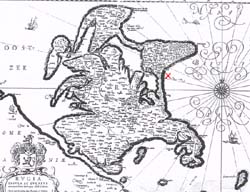
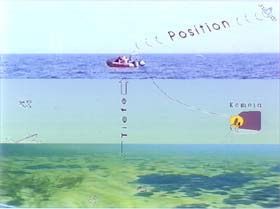
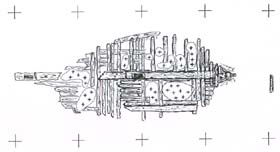
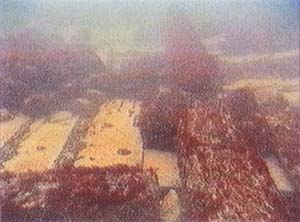
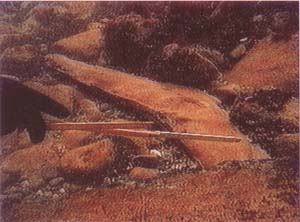
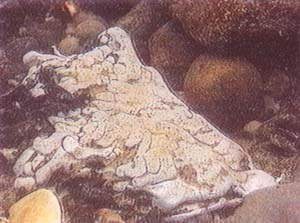
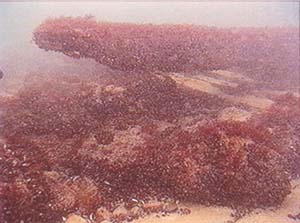
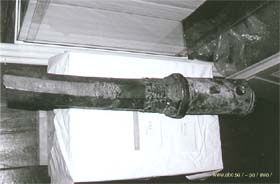
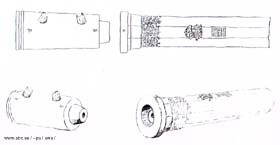
 Back to Nordic Underwater Archaeology
Back to Nordic Underwater Archaeology